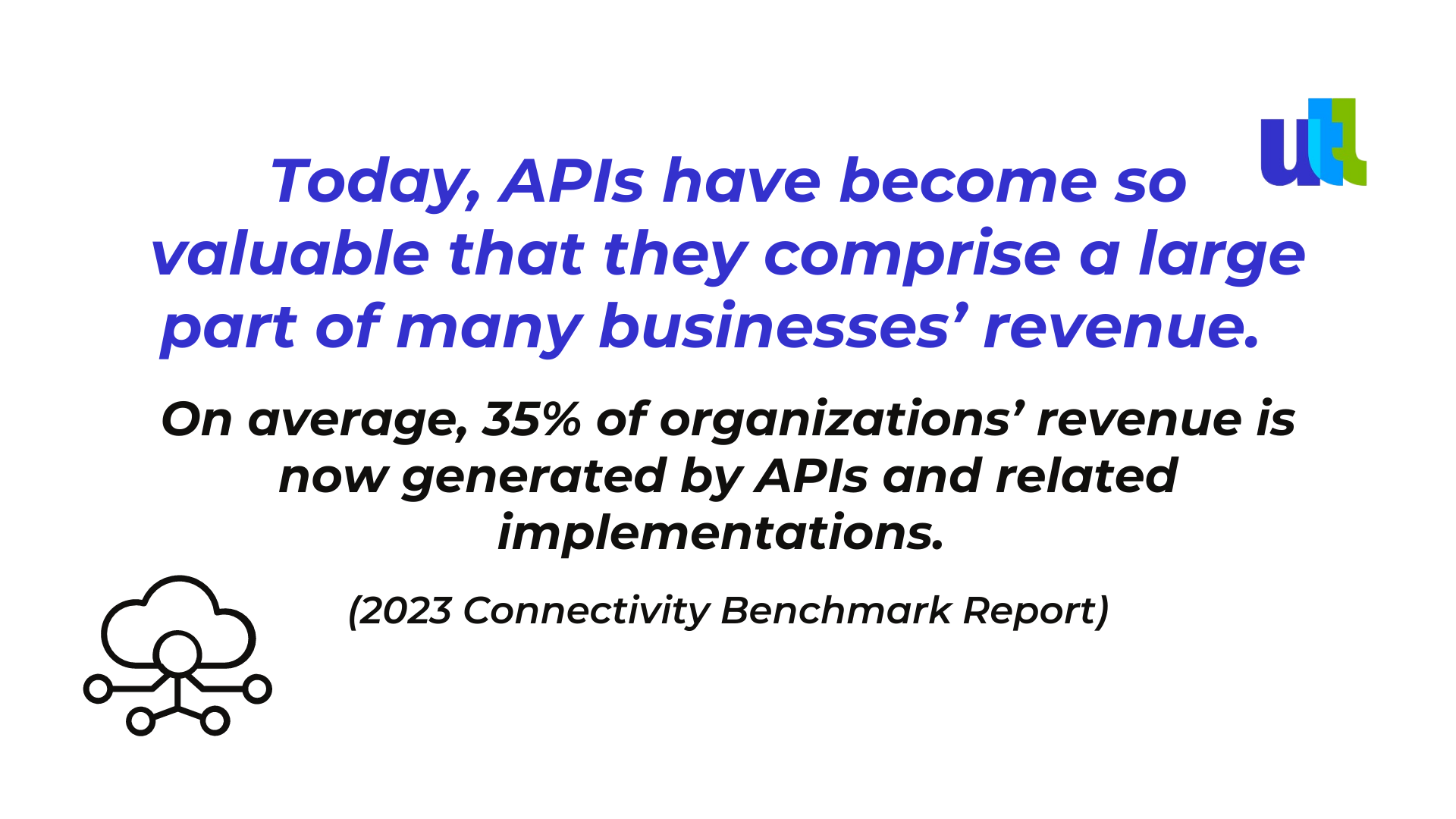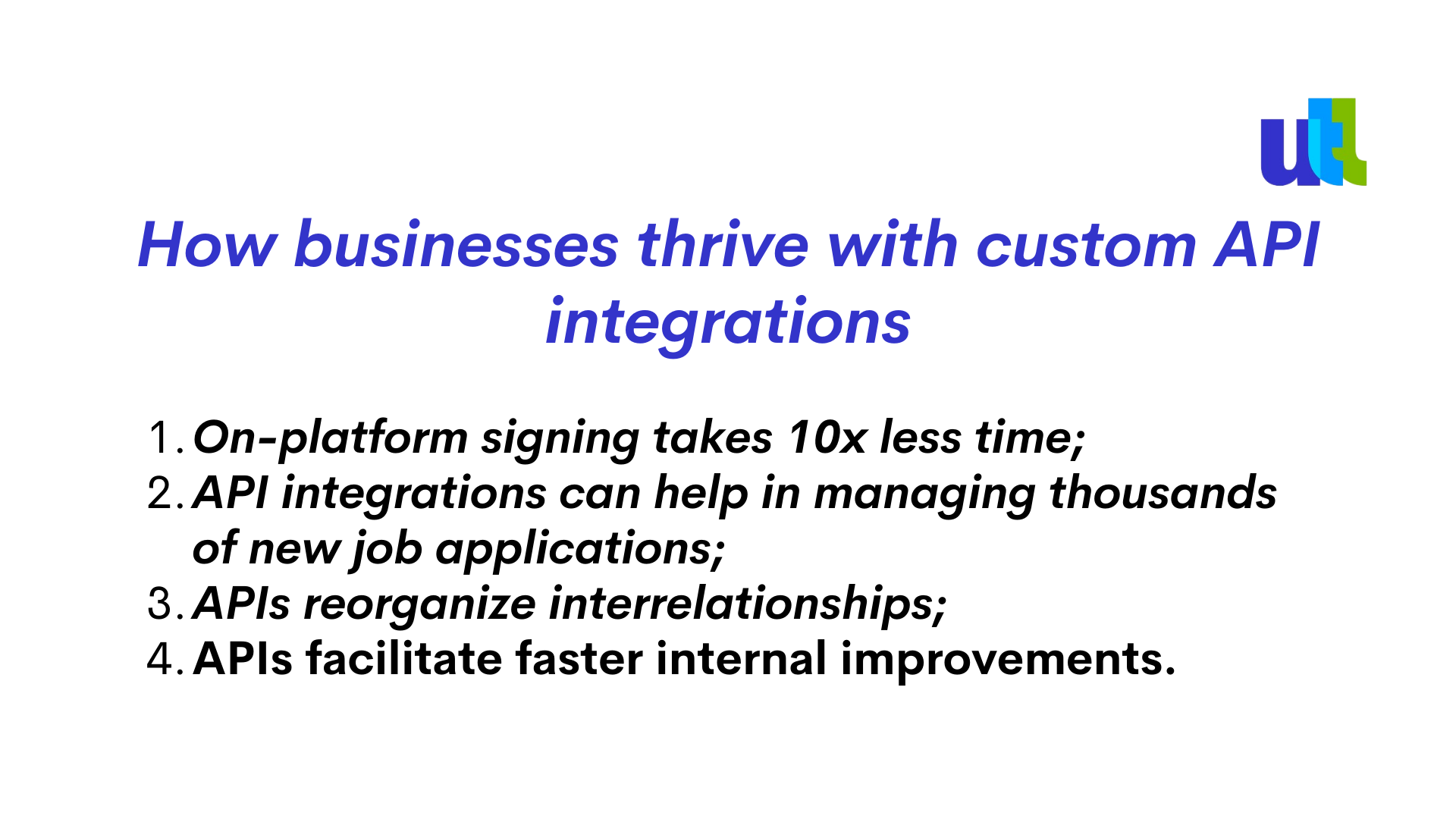APIs have literally transformed the way businesses operate by creating connected experiences, automating manual tasks, and providing the tools that allow to work more efficiently for some of the most successful digital companies, such as Apple and Microsoft. But not only big tech companies can benefit from APIs.
What is API?
APIs are an accessible way to extract and share data within and across organizations.

They are all around us. Every time you use a rideshare app, send a payment from your mobile phone, or change the thermostat temperature remotely, you’re using an API.
How does it work? Quite simple. When you use one of the above apps, they connect to the Internet and send data to a specific server. The server then retrieves that data, interprets it, performs the necessary actions, and sends it back to your phone. The application then interprets that data and presents you with the information (or confirmation) about your action in a readable way.
Here are some examples of the most common APIs:
- Google Maps: Thanks to standards applied by Google, most websites can use Google Maps APIs to integrate their location on the maps.
- Skyscanner: It also provides an API for commercial allies that is compatible with XML and JSON for data exchange.
- Weather API: it uses many different APIs that range from weather forecasting to time zones to astronomical information and much more.
The term is not new, but we can’t but mention that modern API has taken on some unique characteristics that have truly transformed the technology space. How?
- Modern APIs adhere to specific standards (typically HTTP and REST), which makes them developer-friendly, self-described, and easily accessible.
- Nowadays, APIs are treated more like products than code. They are documented and versioned in a way that enables users to have clear expectations about their maintenance and lifecycle.
- Since modern APIs are more standardized, they can be monitored and managed for both performance and scale. Furthermore, they have a much stronger discipline for security and governance.

Small and medium businesses mention important timesaving and cost-reducing benefits of APIs, while noticing that they can be incredibly easy to set up. Take the CloudSign eSignature API, which fits neatly into existing workflows and helps improve overall customer experience, get agreements signed faster, lower the cost by reducing paperwork and repeated data.
Sounds good, right? Here are 3 more real-life examples.
How businesses thrive with custom API integrations

1. On-platform signing takes 10x less time
Just think about it: on average, the time can be reduced from 2 weeks to 10 minutes. Think of how much time can be saved in a year.
APIs empower developers to be more productive by reusing code in complex but still repetitive processes. They don’t need to start from scratch every time as the API specifies how to assemble software components in a program.
The faster and easier you can make it for customers and partners to work with you, the more likely they are to buy, and come back.
Let’s take an example of our client - a lending firm that operates across the whole US. Traditional lending processes are fragmented and involve several manual tasks and the simultaneous usage of various tools for managing tracking spreadsheets, sending payment reminders, storing documents, and signing agreements.
And that is where integrating APIs make the difference, allowing to save weeks and close deals in a couple of minutes. Integrations automate manual tasks to generate a smooth, effortless transition between linked applications.
2. API integrations can help in managing thousands of new job applications
Traditionally businesses have taken one of two actions to address growth challenges: hiring more people or enduring slowdowns and bottlenecks. The first one is chosen more often.
When using an API managed by computers, less human effort is required, and workflows can be easily updated to become faster and more productive.
Our recent client needed to keep up with a growing number of applicants. Rather than expand their HR team to manage the increased number of job applications, they looked for APIs that could help automate this and some other processes. One was an eSignature solution that integrate mobile document signing into its recruitment platform.
Now, job seekers spend 30 minutes less time (5-6 minutes instead of 38 minutes spent previously) signing key documents on their platform. Of course, such change has allowed them to become much more attractive for new job applicants and expand their team of highly qualified experts.
3. APIs reorganize interrelationships
APIs simplify and facilitate overall integration which allow different software programs to reorganize their interrelationships according to your business’ specific needs.
By doing that companies can obtain better results while reducing development costs. Externally, companies can integrate their applications with third parties to optimize their functionality and to improve usability.
4. APIs facilitate faster internal improvements
Integrations aren’t just for improving experiences and efficiencies externally, they also have massive cost and time-saving benefits for internal business processes.
Let’s have a look at the following example. Projects that involve senior management often require multiple signatures from different department heads. Bottlenecks and lost documents can easily result in errors and human mistakes that necessitate a reprint and adding another 20-30 pages of paper, while repeating the entire signing process over again.
With the right API, no time is wasted managing and tracking the signing process, while the right contracts always find their way to the right people.
Wrapping Up
API stands for application programming interface, which is a set of definitions and protocols for building and integrating application software.
APIs allow the communication between your product or service with other products and services without having to know how they’re implemented.
When you’re designing new tools and products—or managing the already existing ones—APIs give you flexibility, simplify design, allowing to save time and money, and provide space for innovation. In short, they let you open access to your resources while maintaining security and control.
Ready to add a custom CloudSign API integration into your business workflows? Talk to one of our API experts today and learn how a custom eSignature integration can benefit your business.
For free consultation about custom API integrations click here.
----------------------------------------------------------------------------------------------
View the full presentation:
WRITTEN BY
Sofia Kutko
2023-02-08


































































































































































































